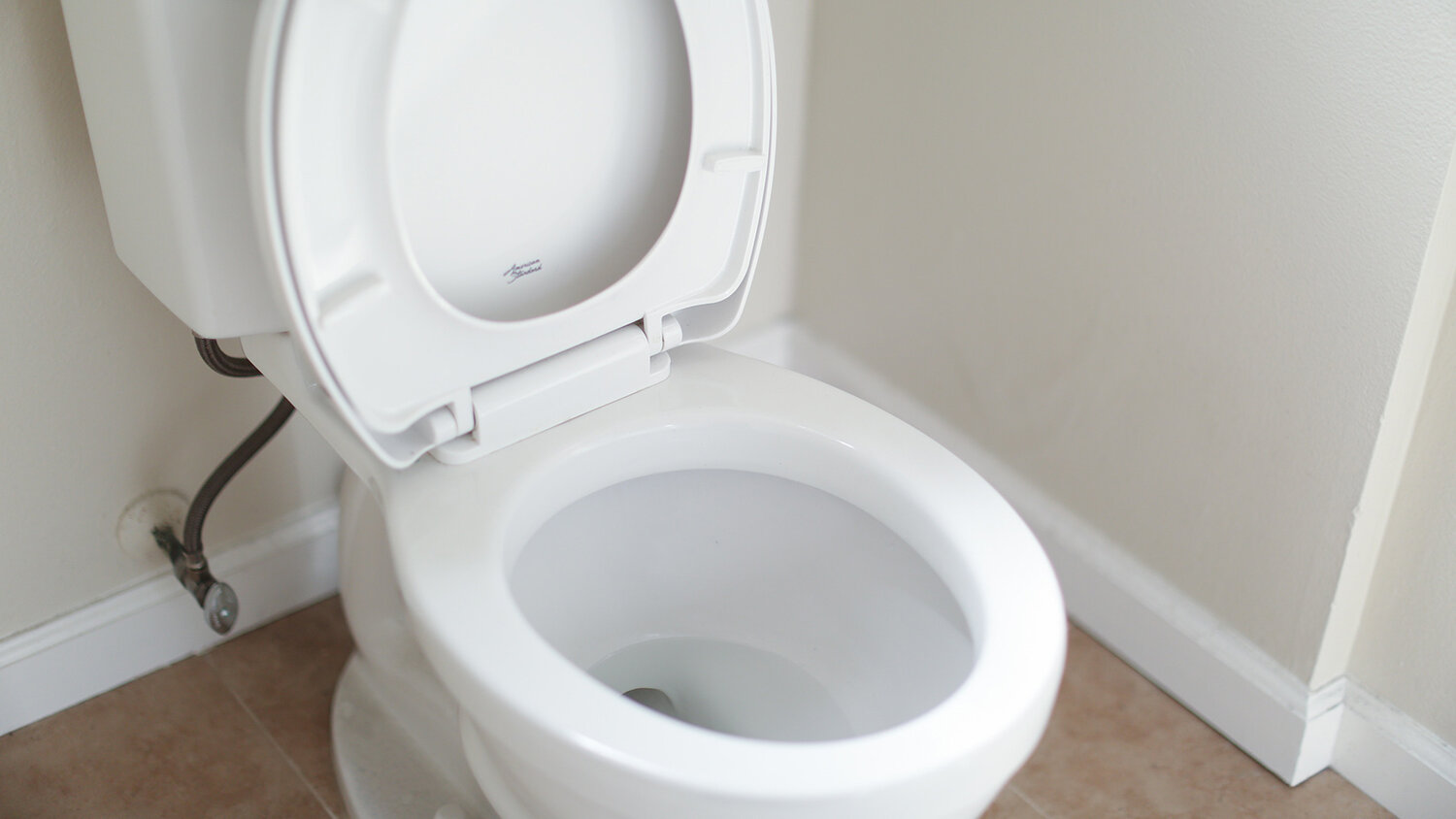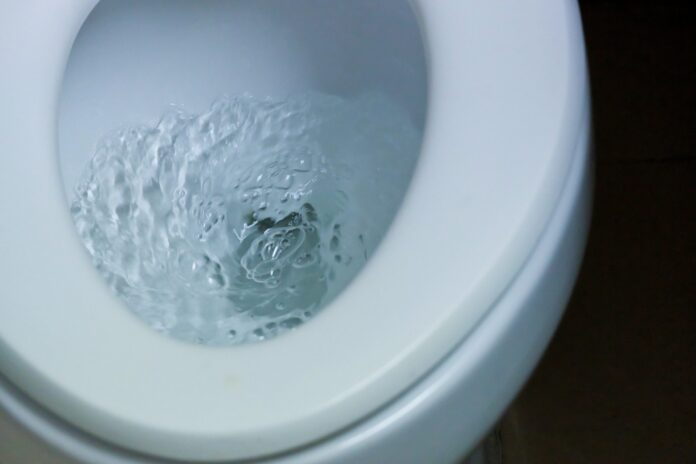Many important systems in your home help improve your convenience and comfort. However, there are a few things more integral than a functioning toilet. So when your toilet doesn’t flush properly, resulting in partial flushes and leftover waste, it can be frustrating and embarrassing, especially when you have guests.
A slow flushing toilet is more than just an inconvenience, it can be quite dangerous. Leftover waste can start to smell and attract pests, and if the blockage gets bad enough, it can even overflow. There are several reasons you may have a slow flushing toilet, and determining the root cause is necessary before fixing the problem.
Here are some of the toilet issues that can lead to a slow flush:
Low Water Level in the Toilet Bowl
If you have a running toilet or if your home has low water pressure, the water level in your toilet bowl can drop below the sewer line level. When this happens, waste can start to backup into your toilet. If there isn’t enough water in the tank when you flush the toilet, the toilet’s flushing power will reduce because there’s a limited force flowing into the toilet.

The force in the toilet bowl normally provides enough force to move the contents of the toilet bowl into the drain. Without enough water, some waste will be left behind in the bowl.
To fix this problem, change the level of the toilet float in the toilet tank. A toilet float sits on top of the surface of the water and automatically turns off the fill valve when the water level reaches a set point. Adjust the toilet float so that more water fills the toilet tank before the fill valve is turned off to increase the toilet’s flushing power.
Mineral Build Up
Another common reason for a flushing problem is mineral buildup. Over time, minerals in the water will build up on the sides of the toilet tank and bowl, creating a barrier that slows down the flow of water. This can be especially problematic if you live in an area with hard water.
Water flows from the tank into the bowl through the jet holes located on the underside of the toilet bowl rim. However, these jet holes can become clogged or partially blocked due to the small size, reducing the force of the flush. If you also live in hard water areas, minerals like calcium or magnesium can build in these jet holes and obstruct water flow.

Use distilled white vinegar and a stiff bristle toilet brush to help break up the mineral build up to restore the flushing power of the toilet. Breaking mineral buildup is one of the incredible uses of white vinegar. It’s also ideal to install a water softener so that this problem doesn’t keep happening in the future.
Blocked Drain Vent
The drain vent is the last line of defense against a backup. If this becomes blocked, then the toilet will be unable to flush properly. The blockage could be caused by leaves, twigs, or other objects that have gotten into the vent pipe.
These vents don’t just help with smell and releasing hazardous gas to the outside, they also allow the air to enter the waste lines to help the wastewater flow freely through the pipes. You should clear these obstructed vent lines immediately as they can reduce the flushing power of your toilet.

However, clearing these vents isn’t easy because you’ll need to climb up the roof to access the vents. You’ll need to call a professional plumber to clear the blockage and restore proper function to the toilet.
Faulty Flapper Valve
Worn out or faulty flapper valve is another common reason for a slow flushing toilet. The flapper valve is located at the bottom of the tank, and it regulates the flow of water from the tank to the bowl. When you flush the toilet, the flapper valve opens and allows water to flow into the bowl.
The flush valve assembly consists of an overflow tube, a lever, a chain, a flapper, and the flush valve opening in the base of the tank. The flapper is the rubber stopper located at the bottom of the toilet tank. When you press the lever or the button on the toilet, it activates the toilet valve and opens the flapper, releasing the water from the tank into the toilet bowl.
When you depress the toilet handle, you’re lifting the flapper and uncovering this passage, resulting in a slow flushing toilet. To take care of this problem, inspect the flush valve assembly for any problems. Sometimes, the chain lift can get trapped or stuck, which you can easily fix. If the problem persists, consider replacing the flush valve assembly.
Clogged Drains
Toilets can become clogged for a variety of reasons, from flushing too much toilet paper to toddlers putting toys in the toilet. If your toilet is draining very slowly, it’s likely because of a clog somewhere in the system. Use a plunger to try to dislodge the clog. If that doesn’t work, you may need a drain snake. If the clog is too far down the drain to reach with a plunger or a snake, you may need to call a plumber.

Clogged drains often happen when you accidentally flush something down a drain that you shouldn’t. Make sure you pay close attention to what you’re flushing down your drains. Don’t treat your drains like garbage cans, especially your toilets.
Older Toilets
Older Toilet models may also be more likely to experience clogs and slow flushing speeds. If your toilet is older, you may want to consider replacing it with a newer model. Some older toilets, even older low flush toilets, don’t have the juice you need to get a good flush.
You can also remedy this by investing in the best flushing toilet with a more modern high, efficient design. These toilets will give you plenty of flushing power without costing you a lot in water usage.
Too Much Toilet Paper or Debris
If you’re flushing too much toilet paper or other debris down your toilet, it’s no wonder it’s flushing slow. Even the best toilets can only handle so much at one time. If you’re having trouble with a slow flush, try to cut back on the amount of toilet paper you use per flush. You may also want to try a plunger to clear any debris that may be clogging your toilet.
Toilet papers are also designed to dissolve in water, but they can actually leave behind a sticky, gummy residue. Some toilet papers are thicker than others. While this might be comfortable for you, it might be difficult to flush through your system. If you’re noticing that your toilet paper is leaving a residue, try switching to a thinner or recycled paper.
Weak Flushing System
The flushing system in your toilet tank wears down over time. The possible moss build up may happen due to sediments and mineral deposits that come from hard water. This can be the main source of faulty flushing systems since it will reduce the diameter of pipes, reducing water flow through the pathways.
You can easily see hard water after washing your dishes. It’s that soap scum left behind on your glasses. In your toilet, mineral buildup on the inside of your pipes can make the inside of the pipe smaller and smaller until water flows more slowly.
To unclog such a toilet, use drain cleaner, dishwashing soap, and hot water. Pour one gallon of hot water into the toilet bowl, then allow it to sit and dislodge anything that may be clogging the drain. Also, note that you shouldn’t pour hot water if you have an old porcelain toilet. Hot water may cause cracks in the bowl, which require replacement.
After that, remove the tank lid, find the overflow pipe and pour a tablespoon of dishwashing soap into it. Give the soap some ten minutes to seep down the overflow pipe. This will remove calcium deposits. Flush the toilet to remove both the clog and some of the mineral deposits. Also, try to invest in a high quality toilet that is easy to flush such as a pressure assist toilet. This will enable you to flush your toilet with much ease.
FAQs on Why My Toilet is Flushing So Slow
How to fix a slow flushing toilet?
There are a few things you can do to fix a slow flushing toilet. First, make sure there is nothing blocking the drain. Second, check the overflow pipe for clogs. Third, pour dishwashing soap into the overflow pipe to remove calcium deposits. Finally, flush the toilet to remove both the clog and some of the mineral deposits.
How to unclog a slow flushing toilet?
There are a few things you can do to unclog a slow flushing toilet. First, identify the cause of the clog, then use a plunger or plumber’s snake to remove the clog.
Why is my toilet flushing slowly?
Some common causes of slow flushing toilets include low water levels, a partially clogged drain, mineral buildup on the jet holes, a defective flapper, and a clogged drain.
Final Thought on What Causes Slow Toilet Flushing
A toilet is an essential element at home that everyone uses daily. However, a slow flushing toilet can be annoying and inconvenient. If your toilet is flushing slowly, there are a few things you can do to fix the problem. Make sure you take the necessary steps to fix the issue so you can enjoy a quick and efficient flush every time.
The post Why Is My Toilet Flushing So Slow appeared first on Kitchen Infinity.
kitcheninfinity.com










